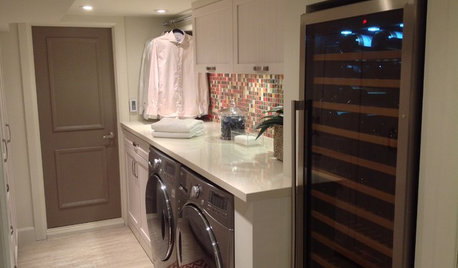Help please: Nozzle stuck on hose
ditnc
9 years ago
Featured Answer
Sort by:Oldest
Comments (10)
User
9 years agoditnc
9 years agoRelated Professionals
Worcester Plumbers · Eagle Mountain Kitchen & Bathroom Remodelers · Brentwood Kitchen & Bathroom Remodelers · Chester Kitchen & Bathroom Remodelers · Cleveland Kitchen & Bathroom Remodelers · Glendale Kitchen & Bathroom Remodelers · Mooresville Kitchen & Bathroom Remodelers · Pinellas Park Kitchen & Bathroom Remodelers · Rancho Palos Verdes Kitchen & Bathroom Remodelers · Skokie Kitchen & Bathroom Remodelers · Sweetwater Kitchen & Bathroom Remodelers · Upper Saint Clair Kitchen & Bathroom Remodelers · Middlesex Kitchen & Bathroom Remodelers · Hawthorne Kitchen & Bathroom Remodelers · Paradise Kitchen & Bath FixturesUser
9 years agoUser
9 years agoUser
9 years agoUser
9 years agoditnc
9 years agoUser
9 years agoDanny Derden
last year
Related Stories

HOME OFFICESQuiet, Please! How to Cut Noise Pollution at Home
Leaf blowers, trucks or noisy neighbors driving you berserk? These sound-reduction strategies can help you hush things up
Full Story
BATHROOM WORKBOOKStandard Fixture Dimensions and Measurements for a Primary Bath
Create a luxe bathroom that functions well with these key measurements and layout tips
Full Story
PETS6 Ways to Help Your Dog and Landscape Play Nicely Together
Keep your prized plantings intact and your dog happy too, with this wisdom from an expert gardener and dog guardian
Full Story
HOUSEKEEPINGWhen You Need Real Housekeeping Help
Which is scarier, Lifetime's 'Devious Maids' show or that area behind the toilet? If the toilet wins, you'll need these tips
Full Story
LAUNDRY ROOMSLaundry Room Redo Adds Function, Looks and Storage
After demolishing their old laundry room, this couple felt stuck. A design pro helped them get on track — and even find room to store wine
Full Story
HOUSEKEEPINGHow to Wash Your House
Avoid damage to siding and plants while getting your home's exterior shining clean, with this guide to using pressure washers and hoses
Full Story
GARDENING AND LANDSCAPINGGet It Done: Clean and Prep the Patio
Haul out the hose and bid cobwebs farewell. It's time to renew your outdoor room for relaxing, dining and entertaining
Full Story
SAVING WATER11 Ways to Save Water at Home
Whether you live in a drought-stricken area or just want to help preserve a precious resource, here are things you can do to use less water
Full Story
LAUNDRY ROOMSKey Measurements for a Dream Laundry Room
Get the layout dimensions that will help you wash and fold — and maybe do much more — comfortably and efficiently
Full Story
CONCRETEWhy Concrete Wants to Crack
We look at the reasons concrete has a tendency to crack — and what you can do to help control it
Full StoryMore Discussions








User